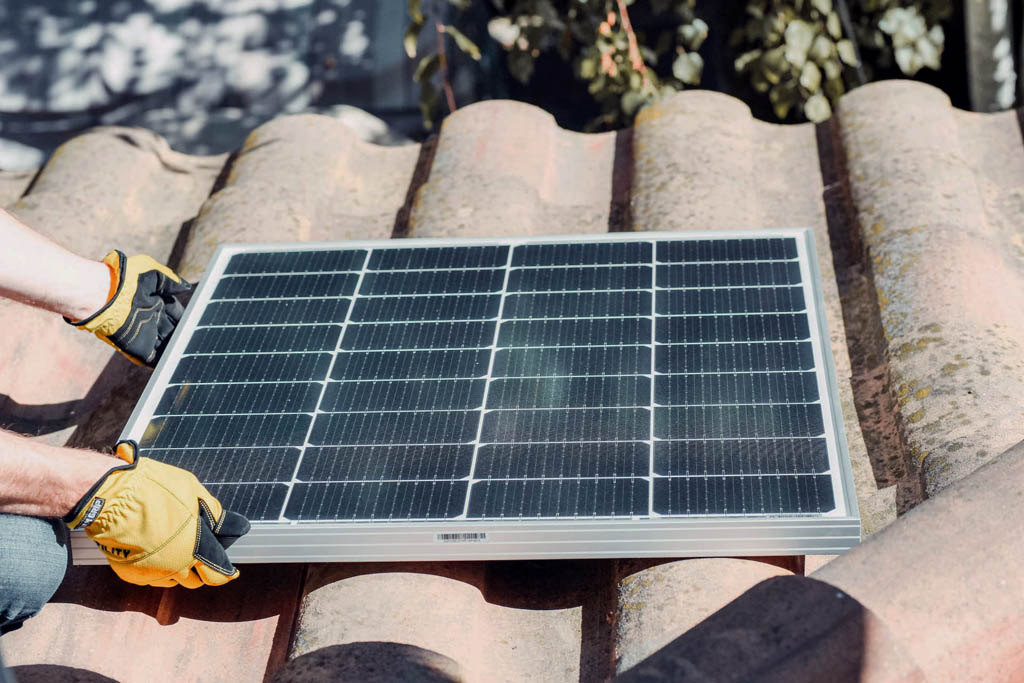Perplexed by the idea of setting up your off-grid solar panel system? Look no further. In this comprehensive guide, we will walk you through the step-by-step process of installing a solar panel setup for off-grid living.
From selecting the right solar panels and equipment to mounting and wiring them, we will cover everything you need to know to make your off-grid living dream a reality.
Whether you are a DIY enthusiast or a novice in the world of solar energy, this guide is designed to provide you with the knowledge and confidence to tackle this project on your own. So, roll up your sleeves and get ready to harness the power of the sun for your off-grid lifestyle.
Planning your solar installation
Before you start installing your off-grid solar panel setup, it’s important to carefully plan out your installation. This involves assessing your energy needs, choosing the right location, and understanding the components of off-grid solar systems.
Assessing energy needs
Energy needs will vary depending on the number of appliances, devices, and systems that need to be powered by your off-grid solar setup. Start by making a list of all the electrical items you plan to power, and estimate their power consumption.
Consider factors such as peak usage times and seasonal variations in energy usage, as well as any future expansion plans. This will help determine the size and capacity of your solar panel array, battery bank, and inverter.
Choosing the right location
Location plays a crucial role in the effectiveness of your off-grid solar panel setup. A south-facing location with minimal shading throughout the day is ideal for maximum sunlight exposure.

Additionally, consider the local climate and weather patterns, as well as any potential obstructions such as trees or buildings that could cast shadows on your solar panels. It’s also important to comply with any local regulations or zoning restrictions regarding solar panel installations.
Choosing the right location for your off-grid solar panel setup can significantly impact its energy production efficiency. By carefully selecting a site that receives ample sunlight and is free from obstructions, you can ensure that your solar panels operate at their full potential, providing sufficient energy for your off-grid living needs.
Understanding off-grid solar components
Choosing the right off-grid solar components is essential for a successful installation. This includes selecting high-quality solar panels, durable batteries, efficient inverters, and reliable charge controllers.
Each component plays a crucial role in the overall performance and reliability of your off-grid solar system, so it’s important to research and invest in the best products for your specific needs.
Understanding the function and capabilities of various off-grid solar components will help you make informed decisions when selecting the right equipment for your installation.
By familiarizing yourself with the key components of a solar panel setup, you can ensure that your off-grid living requirements are met with a reliable and sustainable energy solution.
Procuring off-grid solar panel setup materials
Even before you begin the installation process, it’s essential to procure all the necessary materials for your off-grid solar panel setup. To get started, you can refer to this comprehensive guide on How to Install an Off-Grid Solar System, which provides valuable insights into the materials required for your project.
Selecting quality solar panels
On your journey to going off-grid, selecting quality solar panels is of utmost importance. Ensure that the panels you choose are durable, efficient, and suitable for your specific energy needs. Look for reputable manufacturers and consider factors such as warranty, efficiency, and durability when making your selection.
When selecting your solar panels, consider factors such as size, efficiency, and compatibility with your off-grid setup. High-efficiency panels and reliable manufacturers can ensure that your off-grid system performs optimally for years to come.
Essential balance of system (BOS) components
The quality balance of system (BOS) components is essential for the successful operation of your off-grid solar setup. These components include items such as charge controllers, inverters, batteries, and mounting hardware. With the right BOS components, you can ensure the efficient and safe operation of your off-grid system.
With proper consideration and selection of essential balance of system (BOS) components, you can optimize the performance and longevity of your off-grid solar setup. Quality components such as charge controllers, inverters, and batteries are crucial for a reliable and efficient off-grid system.
Tools and safety gear
Essential tools and safety gear are vital for the installation of your off-grid solar panel setup. From wrenches and screwdrivers to safety harnesses and gloves, having the right tools and safety gear can ensure a smooth and safe installation process. Prioritize safety at all times and invest in high-quality tools to make the installation process easier and safer.
A comprehensive toolkit, including essential tools such as a drill, wire cutters, and a multimeter, is crucial for the installation of your off-grid solar panel setup. Additionally, safety gear such as gloves, safety glasses, and a hard hat are essential for protecting yourself during the installation process.
Installation process for off-grid solar panel setup
Unlike traditional grid-tied solar panel systems, installing a solar panel setup for off-grid living requires careful planning and execution. Before starting the installation process, it’s important to have a detailed understanding of how off-grid solar systems work. If you need guidance on building your off-grid solar system, check out How To Build Your Own Off-Grid Solar System.

Step-by-step solar panel mounting
An essential step in the installation process is properly mounting the solar panels. Here is a basic breakdown of the solar panel mounting process:
| Step 1 | Choose the location for mounting the solar panels |
| Step 2 | Secure the racking or mounting hardware to the roof or ground |
It is crucial to ensure that the solar panels are securely and properly mounted to maximize their energy production and longevity.
Wiring and electrical connections
Step by step, the wiring, and electrical connections must be carefully planned and executed to ensure the proper functioning of the off-grid solar panel setup. This includes connecting the solar panels to the charge controller and the batteries, as well as ensuring proper grounding and protection against overcurrent and overvoltage events.
Mounting and connecting the wiring and electrical components are critical for the overall performance and safety of the off-grid solar system.
Installing batteries and charge controller
Step by step, the installation of the batteries and charge controller is a pivotal part of setting up an off-grid solar system. Proper installation and wiring of the batteries and charge controller are essential for storing the energy generated by the solar panels and regulating the power flow to the electrical loads.
Installing the batteries and charge controller must be done carefully to ensure optimal performance and longevity of the off-grid solar system.
Inverter set-up
To convert the DC power generated by the solar panels into usable AC power for your off-grid electrical loads, a reliable inverter must be properly installed and configured. This includes connecting the inverter to the battery bank, as well as to the electrical loads in the off-grid living space.
Any oversight or mistake in the inverter set-up can significantly impact the usability and efficiency of the off-grid solar power system.
Maintenance and troubleshooting
Keep your solar panel setup running smoothly with regular maintenance and troubleshooting. For a detailed guide on how to install solar panels for off-grid living, check out How To Install Solar Panels (2024 Guide).
Routine solar system checks
An essential part of maintaining your off-grid solar panel system is performing routine checks to ensure everything is functioning optimally. You should inspect the panels, inverters, and batteries regularly to look for any signs of wear, damage, or debris.

Additionally, monitoring the performance of your system can help identify any potential issues early on, allowing for prompt intervention and prevention of larger problems.
Regularly cleaning the solar panels and tightening any loose connections can also contribute to the longevity and efficiency of your off-grid solar setup. By staying proactive with your maintenance routine, you can mitigate the risk of unexpected breakdowns and costly repairs.
Addressing common issues
System malfunctions or performance issues can occasionally arise, but addressing them promptly can minimize their impact on your off-grid living experience. Keep an eye out for common issues such as reduced power output, inverter faults, or battery malfunctions.
In-depth knowledge of your solar system’s components and operation can help in diagnosing and addressing these issues effectively.
Issues such as shading from nearby structures or trees, extreme weather conditions, or aging equipment can all affect the performance of your solar panel setup. It’s essential to address these issues proactively to maintain a reliable and efficient off-grid power supply.
Conclusion
Following this step-by-step guide will ensure that you are well-equipped to install a solar panel setup for off-grid living. By understanding the necessary components, calculating your energy needs, and properly installing solar panels, you can enjoy the benefits of sustainable and independent energy.
It is crucial to follow all safety protocols and local regulations during the installation process to ensure the safety and effectiveness of your solar panel setup. With the right knowledge and preparation, you can successfully transition to off-grid living with a reliable and efficient solar energy system.




